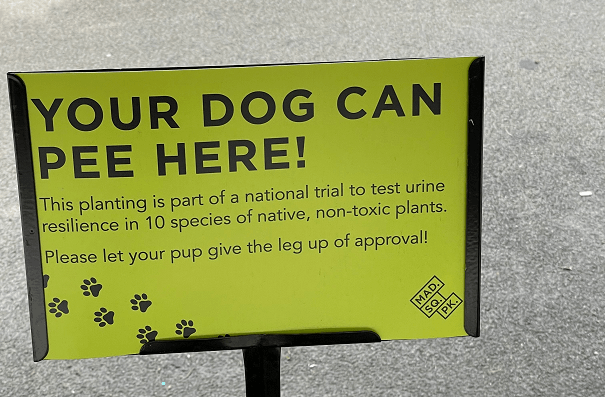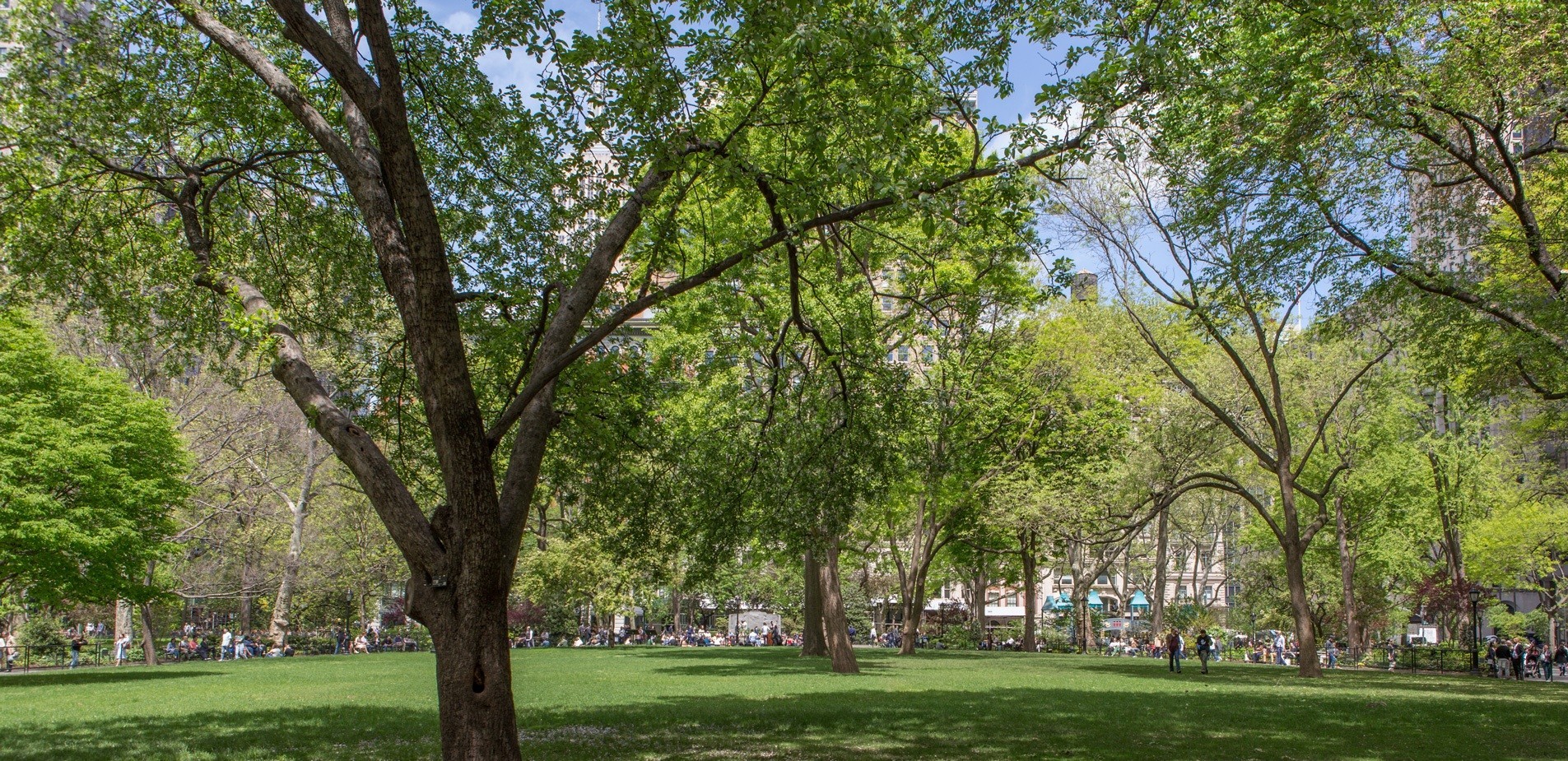Here's Vancouver for you:
See section 2.5 (p.29)
****
Here's an interesting study that suggests considering a different variety of grass:
Man’s best friend can be rather unfriendly to turf. Two studies looked into potential strategies for mitigating damage: more tolerant turf varieties and use of water repellents.

gcmonline.com
****
There's a study underway in NYC currently looking at alternative ground covers to deal w/this issue:

madisonsquarepark.org
****
In general, the issue is not dog urine per se, it's volume and concentration of same. There are several ways to mitigate this.
a) Create a place for the dog to pee that will not damage plants/grasses. (dedicated DOLA, dogs-off-leash-area), or Pet Relief area).
b) For parks w/o this, consider the use of non-living wooden or other poles that may attract said behavior, and surround them non-plant material or urine-resistant plants.
c) Create multiple points for this behavior to diffuse concentration.
d) Use irrigation to diffuse concentration. (only works up to a certain point)
e) employ measures which restrict pet access or discourage pet access to certain spaces. (use of fences, low or high, seats, hedges or other treatments) (these also work to discourage 'desire lines')
f) make sure plant areas are well established prior to letting dogs or people have access (difficult as people get irked seeing a complete park that is fenced off), but the virtue is that larger root systems and more established plants will generally have higher reliance.


